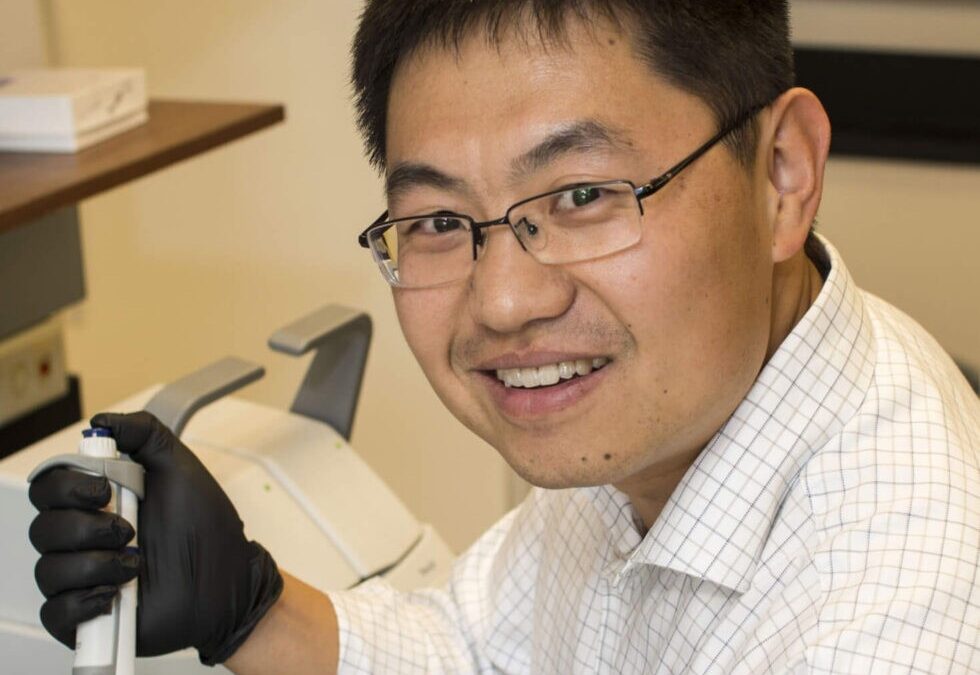Urbana, Ill. – Light is most commonly employed in cancer research via imaging tools to diagnose, treat, and otherwise inform physicians and researchers. However, CCIL member Kai Zhang and his lab are exploring the use of light for optogenetics, an interdisciplinary research field that combines the power of light and genetics.
Zhang, an assistant professor of biochemistry, applies optogenetics to study cell signaling and create new ways to control the pathways that determine cell identity and function. Growth factor signaling pathways are of particular interest in Zhang’s lab due to their roles in many diseases, including lung, breast, and skin cancers, neural differentiation and regeneration, learning, and memory.
Growth factors affect the growth of cells, heavily influencing cell survival and fate. Many cancers upregulate growth factors to increase the rate of proliferation, differentiation, and other downstream effects.
“Approaches to studying the dynamics of these pathways are limited. For example, chemical or pharmacological methods use small molecules to regulate signaling proteins, but it can be hard to control signaling dynamics. It is the same with genetic approaches,” Zhang said.
However, optogenetics can combat the issue by controlling photosensitive proteins via non-invasive light stimulation to change molecular conformation, enhance the molecular activity, and affect protein affinity. One example is the lab’s recently patented Generalizable Light Modulate Protein Stabilization System (GLIMPSe), which rescues protein stability with light.
Zhang has employed GLIMPSE to inhibit the activity of an extracellular-signal-regulated kinase, or ERK, a major point of focus for Zhang’s lab. ERK is a driving force for many cancer pathways, as a mutation in this pathway can allow cancer cells to grow and proliferate without restraint. Additionally, ERK activity is very dynamic and can change cell fate in a matter of minutes.
“The take-home message is that you can use the light system to delineate crosstalk between pathways,” Zhang said. “We found that we can turn on this pathway but were interested in turning it off since it is upregulated in cancers.”
Savanna Sharum Skeeters, a graduate student in Zhang’s lab, discovered that splitting the protein at a certain point could inhibit the ERK pathway. Most importantly, this inhibition is reversible, enabling local treatment of cell fate and creating many opportunities for cancer research.

Image of ERK pathway.
“Instead of an observational tool, light can also be used to modulate and determine molecular activity,” Zhang said. “The philosophy is new and undeveloped, but we are doing our best to inform the community that we can develop new strategies.”
Zhang is also currently applying his expertise in optogenetics to a Fragile X Syndrome study, which was recently awarded funding from the NIH.
– Written by the CCIL Communications Team
Kai Zhang is an assistant professor of biochemistry at the University of Illinois Urbana-Champaign, an affiliate member of the neuroscience program, Center for Biophysics and Quantitative Biology, and Beckman Institute Chemistry-Biology Interface Training Program. Find out more about the Zhang lab’s research and follow them on Twitter: @Zhanglab1.
Read more about this research published in ACS Synthetic Biology and eLife.

